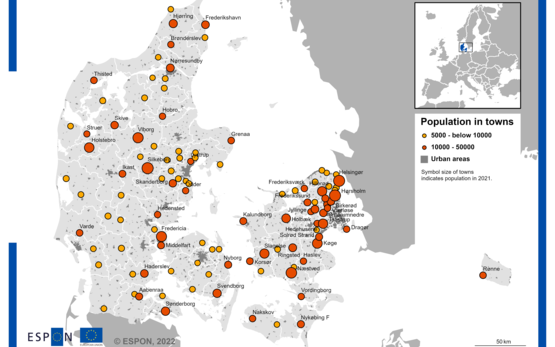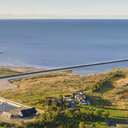Spotlight
-

Denmark, small and medium sized cities
Case Studies | August 25, 2022Looking for new activities and attractions to maintain vibrant town centres and develop appealing urban areas

Looking for new activities and attractions to maintain vibrant town centres and develop appealing urban areas

This report contributes to the Maritime Spatial Planning with two objectives: to undertake an analysis and characterization of the coastal and maritime planning and land-sea interactions from a mul

Article 174 of the TFEU states that: '’the Union shall aim at reducing disparities between the levels of development of the various regions and the backwardness of the least favoured regions.

This project, emanating from the targeted analysis project Maritime Spatial Planning and Land Sea Interactions (MSP-LSI) explores the potential spatial tensions between the deployment of renewable sources of blue energy (energy derived from our seas and oceans), with a particular focus on offshore wind energy, and other (potential) utilisations of the European seas.

This study analyses the implementation of an Integrated Territorial Investment (ITI) targeting small islands of the North Aegean Region in the 2014-2020 programming period, considering observed pat

Accessibility is an important aspect in the debate of regional development. It is used as an indicator to describe the territorial aspects of the transport system. Access to and from a region or city is considered an important aspect of the competitiveness of the location. During the last years efforts have been made to improve the accessibility of cities and regions in large parts of Europe. Many of these efforts have been related to improvements of the rail networks.

Balanced overall growth is considered a precondition for reasonable equilibrium in living conditions across the entire EU territory. The economic success of a region can be assessed in many ways. A measure that is most often used is Gross Domestic Product (GDP) both in absolute figures and as a rate of change, the latter being helpful to measure economic growth.

Europe’s mountain areas are in many ways of great importance as they comprehend a set of features to be considered as territorial potentials, in particular as water resource, they have an ecological, cultural and environmental diversity, which is an asset.

One of Europe’s features is its multitude and diversity of coastal areas. Today 35% of the European population lives close by the sea. Of all regions at Nuts 3 level, 29% are considered coastal regions. Traditionally, coastal areas specialised in fishery and trade resulting in the development of numerous harbour cities along the coast. Large metropolitan regions have then grown along the waterfront together with a large amount of small and medium sized cities. Nowadays harbour functions of coastal cities have developed into a dense network of maritime transport.

Thinking towards the future is an essential precondition for investigating where policies are necessary and how they should be shaped. Development has its own momentum, but policies can make a difference.

ESPON provides a number of publications bringing together the results from the various ESPON projects and providing synthesises on specific issues.

The ESPON folder presents on six pages an easily understandable summary of the ESPON findings achieved until autumn 2003.

The INTERACT-ESPON Synthesis Report is based on the five ESPON-INTERACT studies and the corresponding conferences and workshops carried out between 2004 and 2006. The purpose of the ESPON-INTERACT cooperation was to stimulate the mutual exchange between territorial cooperation under INTERREG projects and applied territorial research in ESPON.

This report presents the proceedings of the 1st ESPON Scientific Conference on European Territorial Research, held at 13-14 October 2005 in Luxembourg.

The ESPON Synthesis Report II presents integrated ESPON results (status spring 2005) on basic territorial structures, dynamics and policy impacts. It intends to contribute to the process of carrying through the re-launch of the Lisbon strategy and to enable a better understanding of the framework conditions necessary for identifying and mobilising the territorial capital of individual regions and of larger territories across Europe.

The ESPON Atlas provides a synoptic and comprehensive overview of findings from ESPON Projects of the 2006 Programme.

“The accelerating globalisation and new emerging markets will have major impacts on Europe and its territory, cities and regions”, states the freshly in print Europe in the World Report of ESPON, the European Observation Network on Territorial Development and Cohesion.